A New Hochelagan Burying-ground Discovered at Westmount on the Western Spur of Mount Royal, Montreal, July-September, 1898
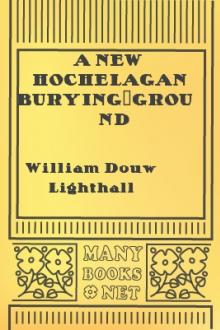
oncept and trademark. Project
Gutenberg is a registered trademark, and may not be used if you
charge for the eBooks, unless you receive specific permission. If you
do not charge anything for copies of this eBook, complying with the
rules is very easy. You may use this eBook for nearly any purpose
such as creation of derivative works, reports, performances and
research. They may be modified and printed and given away–you may do
practically ANYTHING with public domain eBooks. Redistribution is
subject to the trademark license, especially commercial
redistribution.
*** START: FULL LICENSE ***
THE FULL PROJECT GUTENBERG LICENSE
PLEASE READ THIS BEFORE YOU DISTRIBUTE OR USE THIS WORK
To protect the Project Gutenberg-tm mission of promoting the free
distribution of electronic works, by using or distributing this work
(or any other work associated in any way with the phrase “Project
Gutenberg”), you agree to comply with all the terms of the Full Project
Gutenberg-tm License (available with this file
Lecture On The Aborigines Of Newfoundland
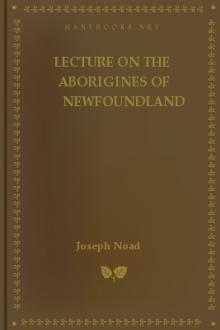
bring about and establish on a firm and settled footing an intercourse
with the natives; and moreover, that such persons should be honorably
mentioned to His Majesty.”
In the same year a proclamation was also issued, addressed exclusively
to the Micmacs, the Esquimaux, and American Indians frequenting the
Island, recommending them to live in harmony with the Red Indians, and
threatening punishment to any who should injure them; and early in the
same year, William Cull, the same person who has been spoken of, with
six others, and two Micmacs, set out upon the river Exploits, then
frozen over, in quest of their residence in the interior of the
country. On the fourth day, having travelled 60 miles, they discovered
a building on the bank of the river, about 40 or 50 feet long, and
nearly as wide. It was constructed of wood, and covered with the rinds
of trees, and skins of deer. It contained large quantities of venison,
estimated to have been the choicest parts of at least 100 deer–the
flesh was in junks, en
Negritos of Zambales

ain that their numbers were then larger, for they were feared by their neighbors, which is now only exceptionally the case.”
Of the vast amount of material that has been written during the past century on the Negritos of the Philippines a considerable portion can not be taken authoritatively. Exceptions should be made of the writings of Meyer, Montano, Marche, and Blumentritt. A large part of the writings on the Philippine Negritos have to do with their distribution and numbers, since no one has made an extended study of them on the spot, except Meyer, whose work (consisting of twelve chapters and published in Volume IX of the Publications of the Royal Ethnographical Museum of Dresden, 1893) I regret not to have seen. Two chapters of this work on the distribution of the Negritos, republished in 1899, form the most recent and most nearly correct exposition of this subject. Meyer summarizes as follows:
It may be regarded as proved with certainty that Negritos are found in Luzon, Alabat, Corregidor
Essays on early ornithology and kindred subjects

ed between the two other ships, which then proceeded to Lutatão, which is perhaps identical with Ortattan, a trading station on the north coast of Great Banda. Here Abreu obtained a cargo of nutmegs and mace and of cloves, which had been brought hither from the Moluccas. At Lutatão Abreu erected a pillar in token of annexation to the dominions of the King of Portugal. He had done this at Agaçai and in Amboyna also.
The return voyage to Malacca was marked by disaster. A junk, which now was bought to replace the Indian vessel, was wrecked, and the crew, who had taken refuge on a small island, was attacked by pirates. The pirates, however, were worsted and their craft was captured. Serrão, who had been in command of the junk, sailed in the pirate vessel to Amboyna, and thence eventually reached Ternate, where he remained at the invitation of Boleife, the Sultan of that island. The junk, of which Ismael was the skipper, was also wrecked near Tuban, but the cargo, consisting of c
The Reconstruction of Georgia
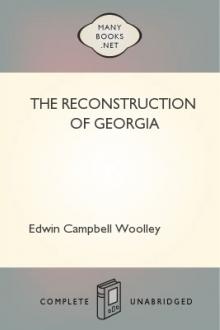
ere were other causes of friction between the two races. Many negroes, on discovering that they were free, assumed what are known as “airs;” and then as now, among things intolerable to a southern white man a “sassy nigger” held a curious pre-eminence. The airs of the negro and the wrath of the white man were both augmented by officious members of the Freedmen’s Bureau. Moreover, because the negroes had gained by the humiliation of the South, they received a share of the venom of defeat. Another element of discord was furnished by a particular part of the white population, the so-called poor whites. These saw in the new proteges of the United States not only a rival laboring class, but a menace to their social position, and hence assumed an attitude of jealousy and hatred. Such were the conditions favorable to social disturbance which followed emancipation. In the latter part of 1865 they had already begun to produce their natural result. Violent encounters between negroes and white men (in which the
A Study of Pueblo Pottery as Illustrative of Zuñi Culture Growth
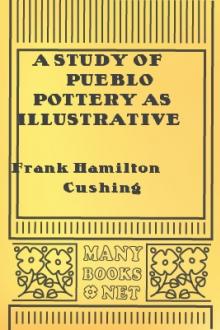
r
chief means of support. As irrigation was not known until long
afterwards, arable areas were limited, hence they were compelled to
divide into families or small clans, each occupying a single house.
The traces of these solitary farm-houses show that they were at first
single-storied. The name of an upper room indicates how the idea of
the second or third story was developed, as it is _ósh ten u thlan_,
from _ósh ten_, a shallow cave, or rock-shelter, and _ú thla nai e_,
placed around, embracing, inclusive of. This goes to show that it was
not until after the building of the first small farm-houses (which
gave the name to houses) that the caves or rock-shelters of the
cliffs were occupied. If predatory border-tribes, tempted by the
food-stores of the horticultural farm-house builders, made incursions
on the latter, they would find them, scattered as they were, an easy
prey.
ADDED STORIES FOR CLIFF DWELLINGS DEVELOPED FROM LIMITATIONS OF
CLIFF-HOUSE SITES.
[Illustration: FIG. 498.–A typical cliff-dwel
Mound-Builders
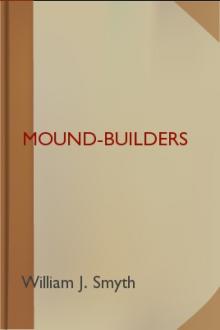
lt there was a single skeleton very much decayed. Within these vaults and beside the illustrous dead, were found more than 3,000 shell-beads, ornaments of mica, copper bracelets, and other stone carvings. Around the lower vault were found ten much decayed skeletons, all in a sitting posture.
The skeletons in the vaults, doubtless, were the remains of royalty, or some distinguished chiefs, whose memory these devoted people desired to perpetuate, while the ten skeletons, which surrounded the vault, were perhaps some of their loyal subjects who were sacrificed according to the custom of some of the heathen nations both ancient and modern. Foster, desiring to draw a comparison or rather identify this mode of burial with those of the Greeks and other nations, directs our attention to Herodotus, Book IV, Chaps. 71 and 190. And for identifying the ceremonial with the funeral of Achilles, our attention is called to the Odyssey, Book XXIV, with the burial of Hector in the Iliad, Book XXIV.
Dr. Wilson ide
Kinship Organisations and Group Marriage in Australia
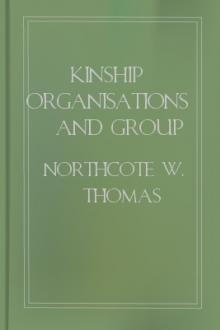
;
phratries.
The passage from what is commonly termed savagery through barbarism to
civilisation is marked by a change in the character of the associations
which are almost everywhere a feature of human society. In the lower
stages of culture, save among peoples whose organisation has perished
under the pressure of foreign invasion or other external influences, man
is found grouped into totem kins, intermarrying classes and similar
organised bodies, and one of their most important characteristics is
that membership of them depends on birth, not on the choice of the
individual. In modern society, on the other hand, associations of this
sort have entirely disappeared and man is grouped in voluntary
societies, membership of which depends on his own choice.
It is true that the family, which exists in the lower stages of culture,
though it is overshadowed by the other social phenomena, has persisted
through all the manifold revolutions of society; especially in the stage
of barbarism, its importance in
Siouan Sociology
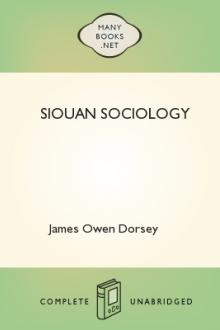
ing circle of the Sisseton and Wahpeton, as shown in figure 30.
THE SISITONWAN OR SISSETON
It is evident that the Sisseton were formerly in seven divisions, the Wita-waziyata-otina and the Ohdihe being counted as one; the Basdetce-cni and Itokaq-tina as another; the Kaqmi-atonwan, Maniti, and Keze as a third, and the Tizaptan and Okopeya as a fifth. When only a part of the tribe journeyed together, the people camped in the following manner: The Amdo-wapuskiyapi pitched their tents between the west and north, the Wita-waziyata-otina between the north and east, the Itokaq-tina between the east and south, and the Kap’oja between the south and west. The following are the Sisseton gentes (figure 31):
1. Wita-waziyata-otina, Village-at-the-north-island.
2. Ohdihe (from ohdihan, to fall into an object endwise). This gens is an offshoot of the Wita-waziyata-otina.
3. Basdetce-cni (Basdece-sni), Do-not-split (the body of a buffalo)-with-a-knife (but cut it up as they please).
Noções elementares de archeologia
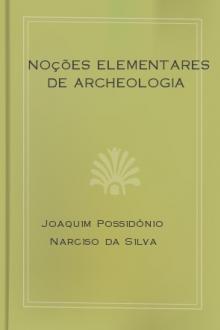
em>Abecedario ou
rudimentos da archeologia.
Os livros d’estes homens, de espirito elevado, dão um grande incitamento
ás investigações archeologicas; e as descobertas dos testemunhos
authenticos da existencia do homem na remotissima época quaternaria,
trouxeram ao campo das discussões scientificas a origem da especie
humana, e o seu viver nos tempos prehistoricos. Colleccionaram-se e
patentearam-se ao publico os utensilios e instrumentos de que usaram os
homens na sua idade primitiva, e que se iam descobrindo em excavacões
casuaes ou feitas expressamente com esse intuito. E não tardou a
reconhecer-se a conveniencia de se reunirem em congresso os homens que
nos differentes paizes se dedicavam a estes estudos, para que da
exposição das suas investigações, e das discussões de uma assembléa tão
competente e auctorisada, se projectasse luz nas trevas d’esse remoto
passado.
Coube a mr. Desor, distincto naturalista, a honra de ser o primeiro a
apresentar a idéa de um congresso internacional de archeologia

